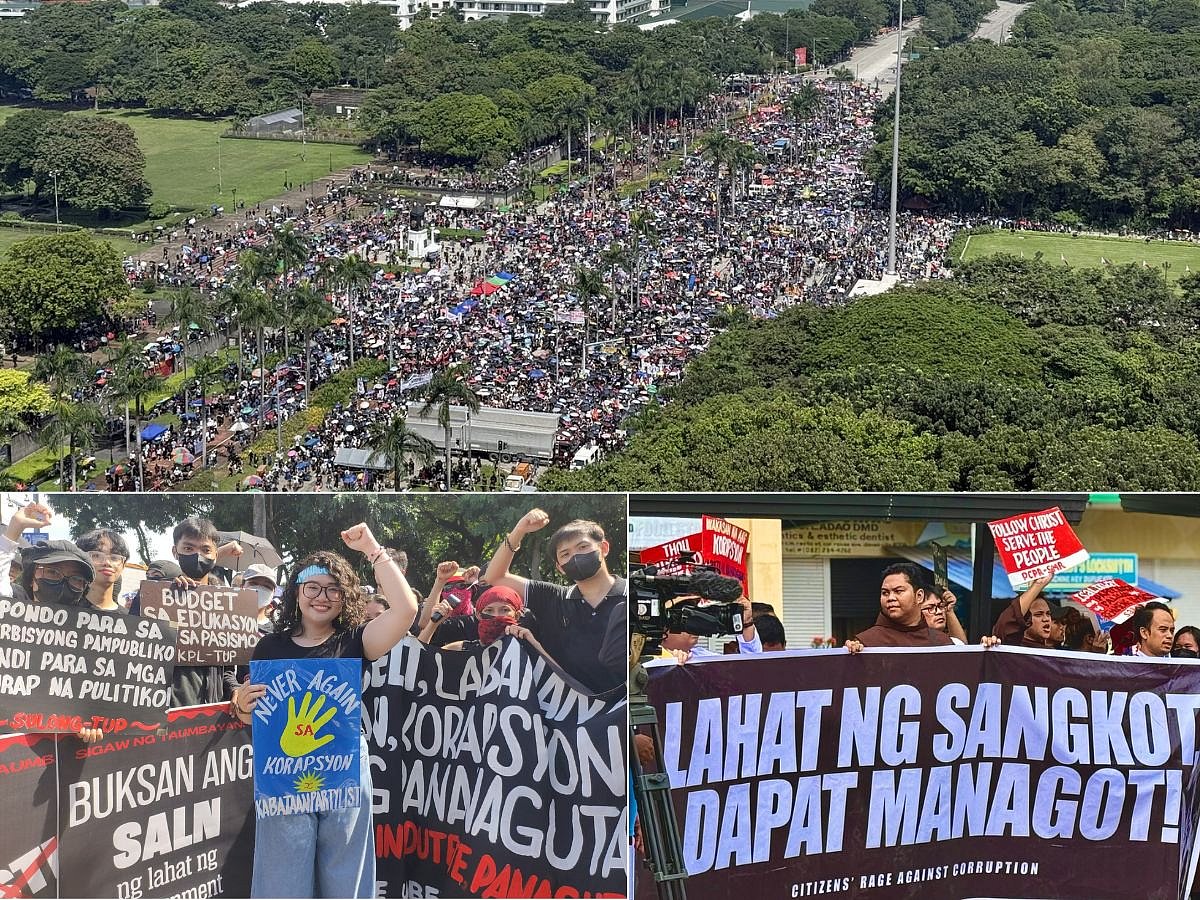Can the people win? Philippines at a crossroads in anti-corruption fight
Reasons why anti-corruption protests in Asian country must master non-violent resistance

Manila: The ongoing anti-corruption protests sweeping the Philippines mark a critical juncture. Mastering non-violent resistance is essential for their success.
Why?
Better lives cannot be built amidst chaos.
Beyond mere slogans and marches, the campaign against corruption must embody discipline, strategy, and a deep commitment to peace to truly resonate across the nation and compel meaningful change.
Here’s what would it take to succeed.
#1: Master non-violence
First and foremost, protesters must embrace active non-violence as their foundational principle.
This isn’t just about avoiding physical conflict; it’s an intentional, repeated declaration of peace that expands the movement’s base.
Non-violence has proven its power once before: in the Philippines, Europe, Russia, Americas, everywhere. It disarms the corrupt’s usual tactics of fear and intimidation, empowering even reluctant individuals — especially millennials — to join the cause, not just on social media (fighting troll army paid by corrupt pols), but on the streets and in the public domain (and in comedy bars!).
Safety (invite ambulance/emergency teams from local governments) during protests, getting the necessary permits, and de-escalation techniques must also be integral to organising, lending confidence to participants and helping sustain a dignified stance in the public square.
Crucially, peaceful protest also fosters solidarity with uniformed personnel and government actors (many of whom are silent supporters), building bridges that violent clashes destroy.
#2. Master story-telling
Equally vital is mastering the narrative.
As Steve Jobs famously noted, “The most powerful person in the world is the storyteller.”
Anti-corruption campaigns must anchor their narrative in irrefutable data — highlighting the personal (flood victims) as well as the hard facts of stolen public funds that steal from every Filipino’s future.
For instance, corruption guts approximately 20% of the Philippines’ national budget (P6.7 trillion for 2026). This lost investment translates directly into fewer jobs, lives cut short by floods, deteriorating infrastructure, and weaker social services that starve ordinary families.
Protests grounded in clear analogies and statistics — how much is lost to questionable projects, how that impacts the poorest communities — offer an indisputable narrative.
#3. Master the culture
More important, is to ride the tide of culture.
If pols can “budots” their way to the apex of power, or wriggle out of plunder cases, protesters should explore “budotsing” as part of their messaging tools.
A little creativity, and spontaneity, goes a long way.
It shouldn't stop there: Transparency, not mere accusations, defines legitimacy here. Recent polls underscore that 97% of Filipinos agree the culture of corruption is “rampant” within the government.
Equipped with truth-seeking cultural expressions, protesters must wield it strategically (anti-corruption chants during competitive college games are a good start).
The battle for public opinion is fought vigorously online amid a crowded field of voices — and overwhelmingly sophisticated opposition.
Disinformation campaigns linked to foreign-backed troll farms and covert influence efforts challenge the resistance’s narratives daily.
Understanding these dynamics is crucial for crafting persuasive, viral messaging that breaks through noise and counters falsehoods with facts and authenticity.
#4. Master legislation
The anti-corruption drive must fully grasp the legislative process itself. How are budget decisions taken?
Breaking down the complexity of budgeting to simple, easy-to-understand explainers can help educate, first the campaigners, and next the wider public.
It all boils down to the 1987 Charter. Despite mounting anger over lost billions and mysterious budget “insertions,” Constitutional realities bind citizens: elected representatives hold the “power of the purse.”
That means supporting legislators who drive transparency and curb abuses. Then keeping the pressure on those proven to have abused their power.
#5. Highlight the good, the true, the beautiful
Effective campaigns require pushing for transparency, and budget reforms that ensure elected officials cannot continue secretive manipulation.
The protest message must be clear — prosperity can only blossom in an environment that embraces the beautiful, the good and the true (BGT), not through corruption, fear, or violence.
Beauty? Durable infrastructure is beautiful. Adherence to basic engineering standards is desirable. Good governance means Filipino taxpayers get the best bang for the buck.
Those midnight budget insertions by unknown hands in the country’s legislative chambers, and in the executive form part of a dark era.
Ending it will only honour the memory of Filipino heroes, especially Dr Jose Rizal, who once wrote "I die without seeing the dawn brighten over my native land...You who have it to see, welcome it — and forget not those who have fallen during the night.”
The light of truth is the best disinfectant. That means fact- and data-driven narration, not speculation or insinuation. That means livestreamed investigations.
Takeaways
Anti-corruption protests in the Philippines stand at a crossroads.
With steadfast commitment to non-violence, truth-telling, smart social media engagement, and legislative savvy, millions of Filipinos can mobilise peacefully to transform the political culture.
This approach is not just aspirational — it’s strategic. As recent mass movements have shown worldwide, true change is born from discipline, facts, and inclusiveness, not chaos.
Filipino protesters have the mission, the data, the popular support and historic momentum to wipe away the cover of the night.
Now they must master the art of peaceful resistance to ensure their voices ring clear and unshakeable against corruption’s entrenched power.
Sign up for the Daily Briefing
Get the latest news and updates straight to your inbox
Network Links
GN StoreDownload our app
© Al Nisr Publishing LLC 2025. All rights reserved.